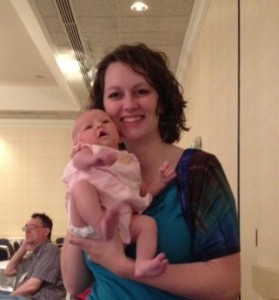 Earlier this month, I presented at the LDStorymakers Writers’ Conference on character arcs. There was one question that my examples didn’t seem to address very well on character arcs at the climax. The other day, we were watching my two-year-old’s favorite movie when it hit me: this specimen of high art is a perfect example of the model of character arcs at the climax!
Earlier this month, I presented at the LDStorymakers Writers’ Conference on character arcs. There was one question that my examples didn’t seem to address very well on character arcs at the climax. The other day, we were watching my two-year-old’s favorite movie when it hit me: this specimen of high art is a perfect example of the model of character arcs at the climax!
So I present to you this amazing, insightful analysis of character arcs at the climax featuring . . .
Kung Fu Panda 2!
My model for character arcs at the climax is very loosely based on what I remember from Michael Hague’s 1988 book on screenwriting, which I read last fall. I think. This is only one method of showing the ultimate moment of change for the character’s arc, of course, but it’s pretty awesome.
Creating the ultimate moment of change at the climax
Here’s how you can do this at home. The characters must already be following Michael Hague’s model described in his RWA workshops: the character starts off with a longing or need. They have a wound, some event in their past that affected the way they view themselves/the world. This wound led to a belief (usually mistaken), which also affects the way the character acts and interacts with the world (his/her mask). But this isn’t how the character really, truly is (or could be or should be), his/her essence.
My example is from a WIP where I’m still honing this aspect. The heroine’s wound is something bad that happened to her and challenged her faith, and she no longer believes in much of anything. Throughout the course of the book, the hero begins to show her the power of believing (in a religious and nonreligious way).
- Set up the bad guy (internal, external, weather, whatever) the right way—align the bad guy with the mask. I set up my villain as believing belief is bad. (That’s the part I’m still working on.)
- Show how the MC is (or has been) like the bad guy: they have this same weakness or mask. They recognize that bad in themselves, they see how it’s not working in their own life, and REALLY not working for the villain!
- Make the MC choose—it’s all about forcing the character to make a choice to leave behind that comfort zone (the mask) and embrace the change (the essence)
- AFFIRM THE CHOICE—because of what the character has learned or how s/he has grown—ONLY WITH THIS—are they strong enough to defeat the bad guy. This is the bad guy’s weakness, after all, that they’ve taken this to an extreme! Because my heroine has the courage to believe, she’s strong enough to defeat the bad guy.
- Timing—the events should be in close proximity, if not simultaneous. The change happens at the climax (or shortly before/after) because that’s when the character ceases to grow and change—and be interesting.
Again, this is hard!
Character arcs in action: Kung Fu Panda 2
 I haven’t seen Kung Fu Panda, but I’ve seen the sequel probably 30 times. It’s my two-year-old’s fave (“Panna,” she calls it.)
I haven’t seen Kung Fu Panda, but I’ve seen the sequel probably 30 times. It’s my two-year-old’s fave (“Panna,” she calls it.)
The basic premise of the movie is that Po, the eponymous martial artist panda, realizes that he’s adopted (his dad is a goose…). The villain, Shen the peacock, is threatening to take over all of China and destroy kung fu.
Often when we see this, the wounds that create the characters’ masks are very similar. Po’s wound is that (he thinks) his biological panda mother abandoned him. Shen’s wound is that, when his parents saw his psychopathic tendencies, they exiled him (even though they loved him, which he doesn’t see).
Po realizes that Shen persecuted and killed Po’s parents to try to circumvent the prophecy that Shen would be defeated by a warrior of black and white. Despite Shen’s attempts to kill Po, and the turmoil of Po’s past, Po is able to appreciate the friends and family and abilities he has now and find inner peace. With that inner peace he quite literally has the power to defeat Shen’s weapon (a firework-based cannon).
But the character arcs are even openly stated immediately after Po destroys the weapon:
SHEN: H-how did you… How did you do it?
PO: You know, you just gotta keep your elbows up and keep the shoulders loose…
SHEN: Not that! How did you find peace? I took away your parents! Everything! I– I scarred you for life!
PO: See, that’s the thing, Shen… scars heal.
SHEN: No, they don’t… wounds heal!
PO: Oh yeah. What do scars do? They fade, I guess…
SHEN: I don’t care what scars do!
PO: You should, Shen. You gotta let go of that stuff from the past ’cause it just doesn’t matter! The only thing that matters is what you choose to be now.
via Kung Fu Panda 2/Transcript – Kung Fu Panda Wiki, the online encyclopedia to the Kung Fu Panda world!.
Shen then makes his choice—to continue to fight and try to change the prophecy, to keep doing what he’s been doing. Po, having changed and grown beyond the state where Shen remains stuck, is able to escape and Shen destroys himself.
Because of what Po has learned on his journey (as prompted by external events), he is now strong enough to defeat not only his own mask and wound, but also to defeat Shen. Sometimes this works on a more metaphorical level, but in Kung Fu Panda 2 it’s very literal and very real.
What do you think? How do you handle character arcs at the climax?
Photo credits: Character arcs—Riccardo Romano
 .)
.)

 them together.
them together. 


 I think that the exact
I think that the exact  For example, if we need our character to go from shocked after the last disaster to furious in the sequel, we start with that initial emotional response—the shock. We don’t have to spend a long time exploring the shock, especially if that’s the kind of reaction you’d expect in light of the disaster. Once we create a vivid picture of the shock (and that’s a toughie, since it’s characterized by the absence of feeling, really), we can give the character a minute to get her bearings again.
For example, if we need our character to go from shocked after the last disaster to furious in the sequel, we start with that initial emotional response—the shock. We don’t have to spend a long time exploring the shock, especially if that’s the kind of reaction you’d expect in light of the disaster. Once we create a vivid picture of the shock (and that’s a toughie, since it’s characterized by the absence of feeling, really), we can give the character a minute to get her bearings again.
